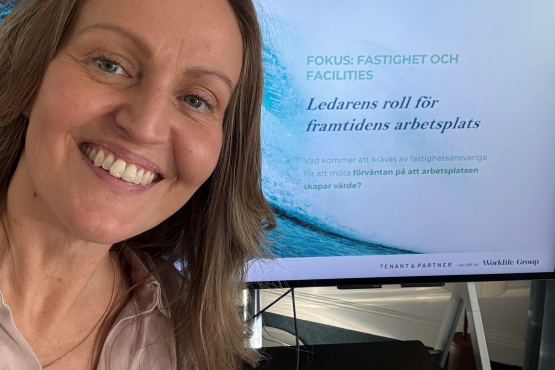Shaping futures for the forest value chain
What would an ancient pine and lichen say about clear-cutting? What does it look like when the voice of ecosystems is integrated into decision-making? And what will a city look like in 2050 when it has grown in harmony with the forest? These are some of the questions explored by the 10 funded future prototypes for a sustainable forest value chain.
When the call for proposals Future prototypes for a sustainable forest value chain closed at the end of February, 50 applications had been received. What a search pressure and commitment! We had not expected the volume of applications, but were positively surprised. The call for proposals is aimed at creators in co-creation with actors from the forest value chain, who will design future prototypes. Prototypes that take us into four possible future scenarios for the forest value chain.
Which future prototypes were funded?
The following future prototypes were funded within the framework of the call for proposals - and will see the light of day at the end of March 2025:
- The Boardroom: The Boardroom is an immersive future prototype where ecosystem intelligence redefines decision-making in the forest industry
- Forest Parliament: A parliament in digital format where the forest itself discusses the effects of human actions and makes policy recommendations.
- The forest pass: A future where the forest is no longer free, but you need a forest pass that gives access and determines where in nature you are allowed to move.
- The forest value feeling: A future where the status of recycled wood products has been raised and you can follow how the material has been treated, used and designed.
- Yggdrasil: A future where forest information is integrated into business meeting rooms – both in decisions and in the circular design of the room
- The Polemocene: exploring a future where the forest has started a war against humans and what it means for humans, society and value chains
- LångLivat Borlänge 2050: A future where the city grows in harmony with the forest, where the forest's values are cultivated locally and resources remain in a circular economy.
- Future Wood: The biointelligent forestry company of the future, which describes its circular, sustainable production methods in a fictional annual report for 2050
- The Game of the Forest: A board game where players are faced with choices that shape the future of the forest, from high-tech resource use and economic returns to the needs of ecosystems.
- Skogsfolk: The forest industry magazine in 2050, where the forest is managed by a new generation with different perspectives; Skogsfolk, Teknikanamarna and Chainsaw Poets.
What do future prototypes mean for the forest value chain?
In the call for proposals we started from strategic foresight and speculative design as a method, where future prototypes are an important part of the foresight process. The word “prototype” has a different connotation for many, but in this context, future prototypes can be described as objects or experiences from the future, visiting the present. They aim to create thoughts, feelings and discussion about what kind of society we want in the future and how we best get there.
We want different actors from the forest value chain to step into the shaping of possible futures, to understand how it can affect them. What do the futures look like? What has happened and what feelings does it create? What innovations are relevant in the different futures? Leading from the future becomes a way for the actors to prepare themselves and dare to take radical steps in the transition to a sustainable forest value chain.
The future effort is the first part of the transition journey.
The future prototypes are the first of three initiatives that will be implemented in 2025: a transformation journey for the forest value chain. The aim of the initiatives is to promote the use of bio-raw materials from the forest in resource-efficient and circular flows, in a way that stays within planetary boundaries.
Starting the journey in a future-oriented effort was a conscious choice. We saw a lot of conflicts within the forest value chain and a need to look up. In stakeholder interviews, we also heard that several innovation departments today do not work based on how future challenges such as climate change affect their business or development.
Four scenarios from the future
In January 2025, we therefore organised two large workshops with actors from across the forest value chain. Together, they were able to collect weak signals from the future, cluster the signals and develop four future scenarios. The scenarios then became the starting point for the future prototype call: The scenarios
Participants who came forward during the day described the co-creation as unique. That actors with such a breadth from the forest value chain are sitting in the same room, listening to each other's perspectives despite having different opinions, and exploring possible futures.
Next step: a business model call with inspiration from the future
A future prototype can inspire, engage and provoke. But in the next step, the aim is to act on the insights, implement changes and strategic choices. Therefore, it was important for us that the future initiative was followed by initiatives where real change can be implemented: a business model initiative and possibly a policy initiative.
In this call for proposals we noticed that some of the applicant projects had fantastic circular ideas, but which were more of a product prototype. A future prototype is not intended to be a functional product or business idea, but is a representation of a desired or unwanted future. In the business model call that follows, it may instead be relevant for several of the exciting projects to apply – if the purpose matches the call for proposals.
There we want to explore how a wide range of actors can collaborate across borders to develop business models where bio-based raw materials are used resource-efficiently and circularly? How can policy instruments, certification and labelling create a market for sustainable forest raw materials? And how can we ensure increased biodiversity and a balanced climate?
More about the transition journey for a sustainable forest value chain
Last updated 25 March 2025




Leave a comment
You have chosen to disallow certain cookies and funtions on our website, such as commenting on blog posts. You can change your privacy settings at any time to allow these functions and get a better experience.
Change privacy settings